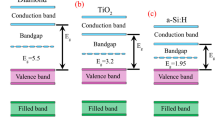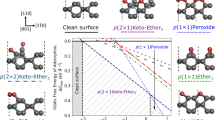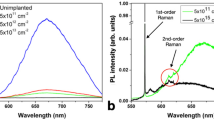Abstract
THE dielectric constant of diamond has been the subject of investigation by a number of workers, among whom particular mention may be made of Robertson, Fox and Martin1, Whitehead and Hackett2and Groves and Martin3. The exact value of this constant and whether there is any difference between the values exhibited by the two types, namely, ultra-violet opaque and ultra-violet transparent, appear to be the two main issues involved. The most accurate determination of Whitehead and Hackett gave 5·66 at 800 c./sec. and 27·8° C, whereas Martin and Groves obtained 5·26 by one method and 5·35 by another. Probable reasons for the lower values obtained by Martin and Groves were suggested by them. A significant statement of Robertson and co-workers is that they found no measurable differences for the two types of diamonds.
This is a preview of subscription content, access via your institution
Access options
Subscribe to this journal
Receive 51 print issues and online access
$199.00 per year
only $3.90 per issue
Buy this article
- Purchase on SpringerLink
- Instant access to full article PDF
Prices may be subject to local taxes which are calculated during checkout
Similar content being viewed by others
References
Phil. Trans., A, 232, 463 (1934).
Proc. Phys. Soc., 51, 173 (1939).
Trans. Farad. Soc., 36, 575 (1940).
Proc. Ind. Acad. Sci., A, 25, 408 (1946).
Author information
Authors and Affiliations
Rights and permissions
About this article
Cite this article
BHAGAVANTAM, S., NARAYANA RAO, D. Dielectric Constant of Diamond. Nature 161, 729 (1948). https://doi.org/10.1038/161729a0
Issue date:
DOI: https://doi.org/10.1038/161729a0



